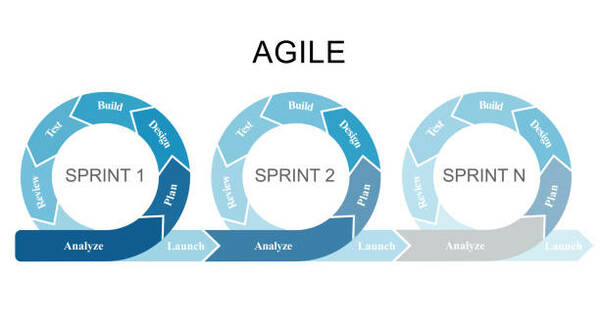In the fast-paced world of software development, the Agile methodology has gained significant popularity due to its flexibility and iterative approach. Agile emphasizes adaptive planning, collaboration, and continuous improvement, enabling teams to deliver high-quality software solutions efficiently. In this article, we will explore the Agile software development process and its key principles.
The Agile Manifesto: Delivering Value and Embracing Change
Agile Principles
- Customer collaboration over contract negotiation: Agile promotes close collaboration between developers, stakeholders, and end-users to ensure that the software meets the customers' evolving needs.
- Working software over comprehensive documentation: Instead of focusing solely on extensive documentation, Agile emphasizes delivering functional software that can be tested, reviewed, and improved upon in short iterations.
- Individuals and interactions over processes and tools: Agile recognizes the value of effective communication and teamwork, emphasizing the importance of individuals working together to achieve common goals.
- Responding to change over following a plan: Agile embraces change as a natural part of the software development process and encourages teams to be flexible and adapt to evolving requirements.
Agile Methodologies
Agile methodologies, such as Scrum and Kanban, provide specific frameworks for implementing the Agile principles. Scrum divides the development process into time-boxed iterations called sprints, while Kanban focuses on visualizing and optimizing the flow of work.
Benefits of Agile Software Development
- Faster time-to-market: Agile allows for shorter development cycles, enabling teams to deliver valuable software increments more frequently.
- Increased flexibility: The iterative nature of Agile enables teams to respond quickly to changing requirements and market demands, reducing the risk of developing outdated or irrelevant software.
- Enhanced collaboration: Agile promotes collaboration between developers, stakeholders, and end-users, leading to better communication, shared understanding, and improved decision-making.
- Continuous improvement: Agile encourages regular retrospectives and feedback loops, allowing teams to continuously improve their processes and deliver higher-quality software over time.
Conclusion
The Agile software development process has revolutionized the way software is built by prioritizing flexibility, collaboration, and customer satisfaction. By embracing the Agile principles and adopting Agile methodologies, teams can benefit from faster time-to-market, increased adaptability, enhanced collaboration, and continuous improvement. As software development continues to evolve, Agile remains a valuable framework for delivering high-quality software solutions in an ever-changing landscape.
https://selleo.com/blog/agile-software-development-process-everything-you-need-to-know



